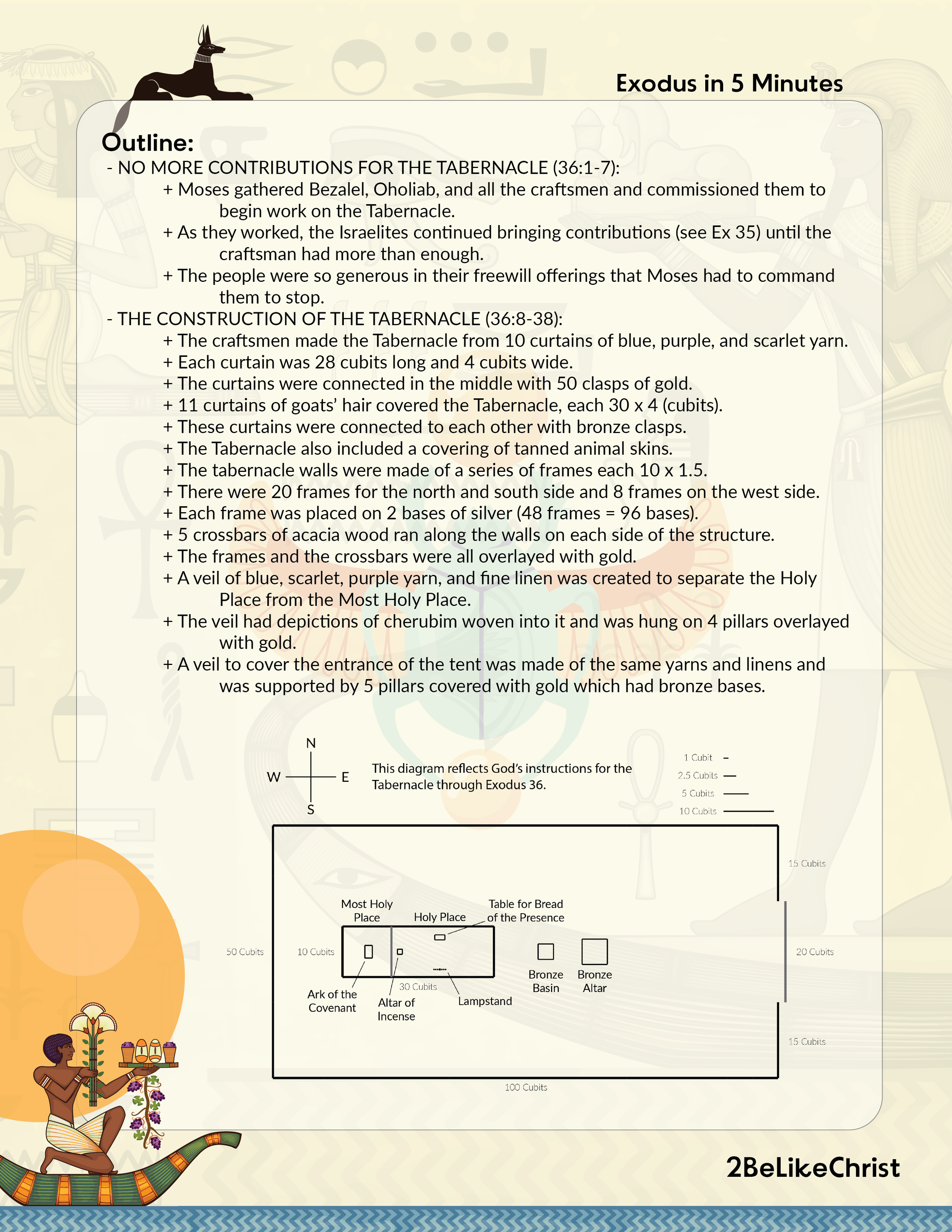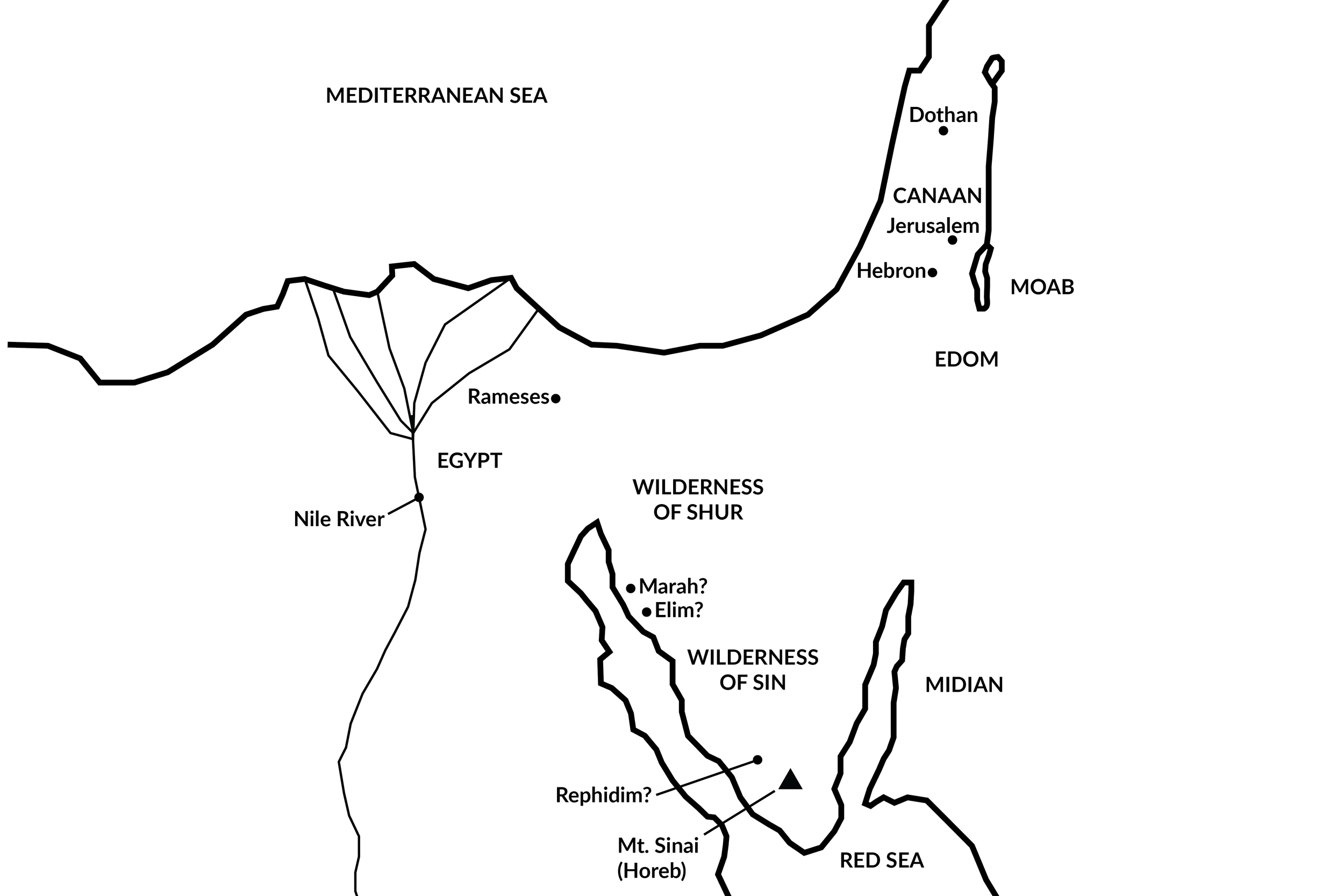Exodus 36 Summary: A Concise Overview in 5 Minutes
Exodus 36 Summary - A Quick Overview
WHEN:
God delivered the Israelites from slavery in approximately 1491 B.C.
Exodus 36 occurred after God spoke to Moses on Mount Sinai, which would place these events approximately 4-6 months after the Hebrews left Egypt (19:1; 32:34).
CHARACTERS:
Moses – Moses was selected by God to lead the Israelites to Canaan. God spoke directly to Moses and Moses communicated God’s words to the people.
Israelites (Hebrews) – The descendants of Abraham, Isaac, and Jacob. God granted them freedom after several hundred years in slavery in Egypt.
Bezalel and Oholiab – Two men specially gifted with the Spirit of God to help in the construction of the Tabernacles and the holy items within it.
WHERE:
Moses and the Israelites were camped at Mount Sinai but were preparing to depart per God’s instructions.
OUTLINE:
NO MORE CONTRIBUTIONS FOR THE TABERNACLE (36:1-7):
Moses gathered Bezalel, Oholiab, and all the craftsmen and commissioned them to begin work on the Tabernacle.
As they worked, the Israelites continued bringing contributions (see Ex 35) until the craftsman had more than enough.
The people were so generous in their freewill offerings that Moses had to command them to stop.
THE CONSTRUCTION OF THE TABERNACLE (36:8-38):
The craftsmen made the Tabernacle from 10 curtains of blue, purple, and scarlet yarn.
Each curtain was 28 cubits long and 4 cubits wide.
The curtains were connected in the middle with 50 clasps of gold.
11 curtains of goats’ hair covered the Tabernacle, each 30 x 4 (cubits).
These curtains were connected to each other with bronze clasps.
The Tabernacle also included a covering of tanned animal skins.
The tabernacle walls were made of a series of frames each 10 x 1.5.
There were 20 frames for the north and south side and 8 frames on the west side.
Each frame was placed on 2 bases of silver (48 frames = 96 bases).
5 crossbars of acacia wood ran along the walls on each side of the structure.
The frames and the crossbars were all overlayed with gold.
A veil of blue, scarlet, purple yarn, and fine linen was created to separate the Holy Place from the Most Holy Place.
The veil had depictions of cherubim woven into it and was hung on 4 pillars overlayed with gold.
A veil to cover the entrance of the tent was made of the same yarns and linens and was supported by 5 pillars covered with gold which had bronze bases.
DIAGRAM OF THE TABERNACLE:



